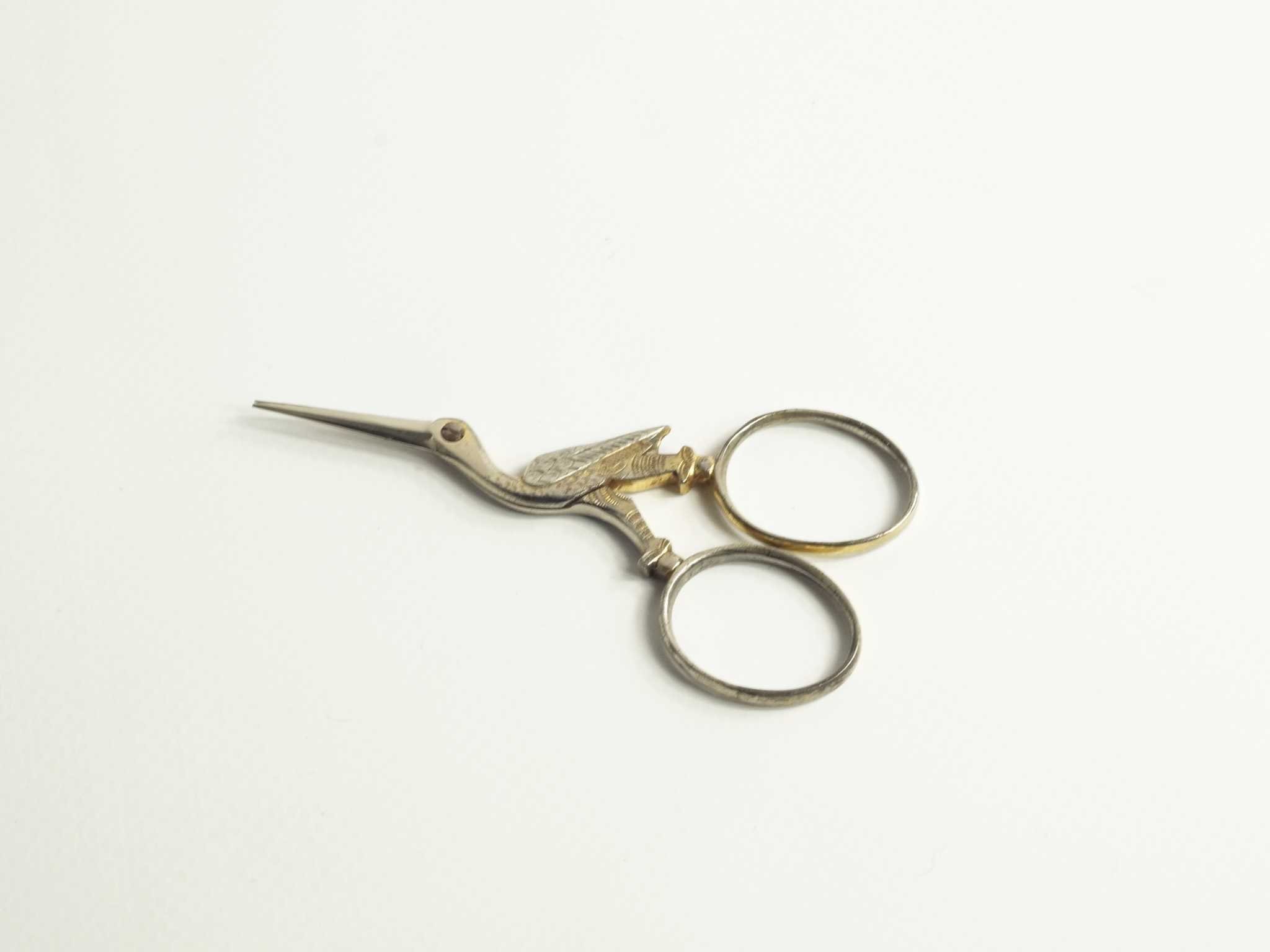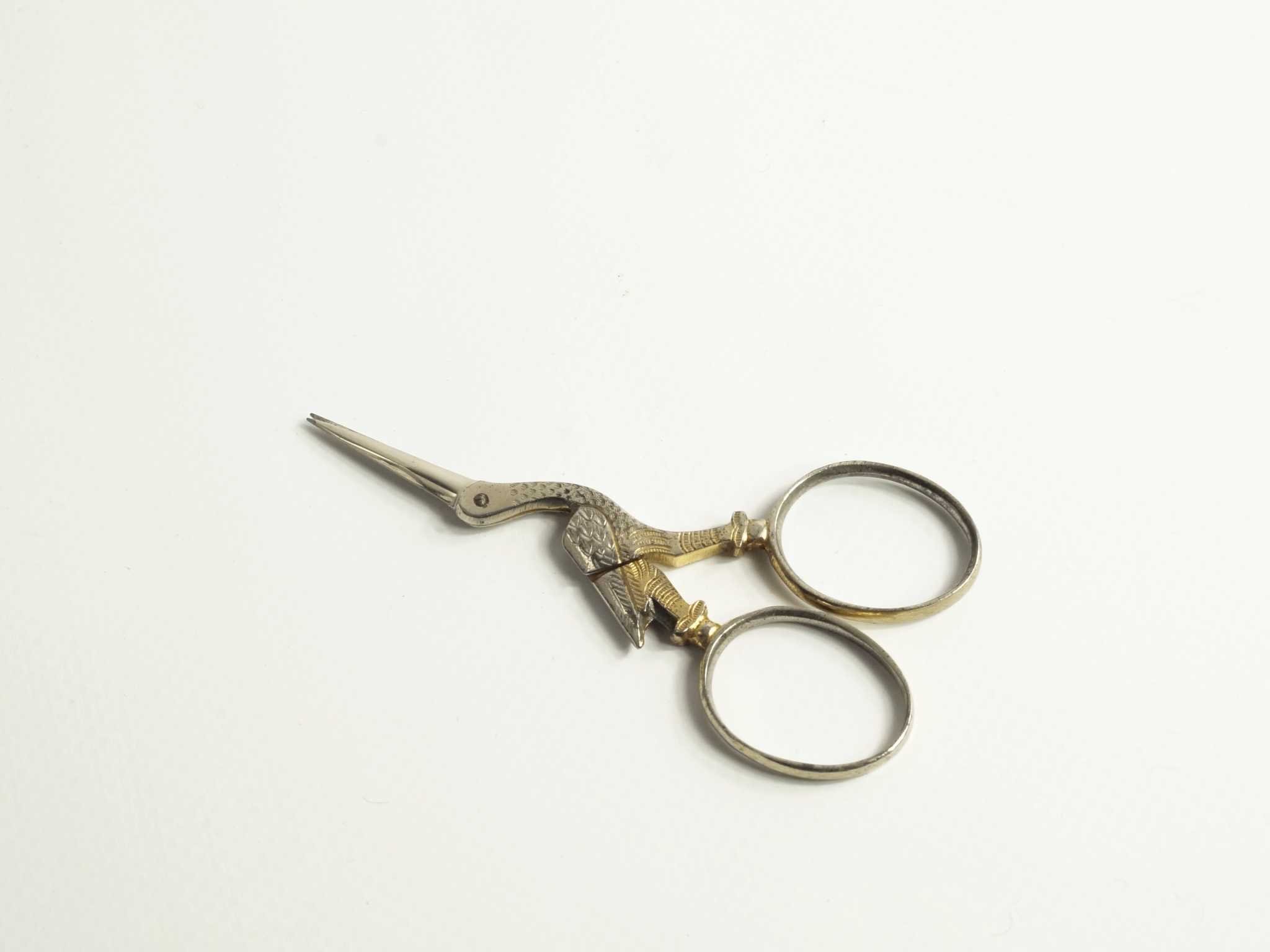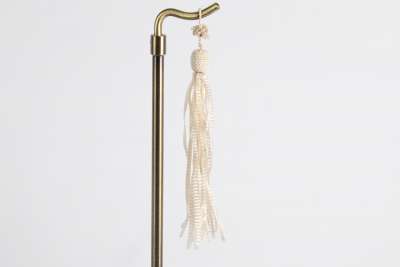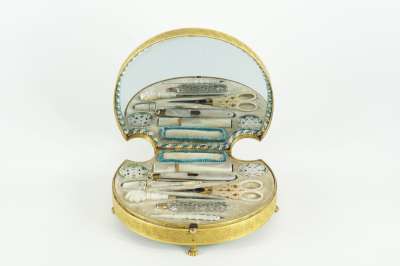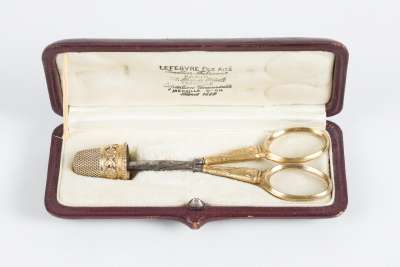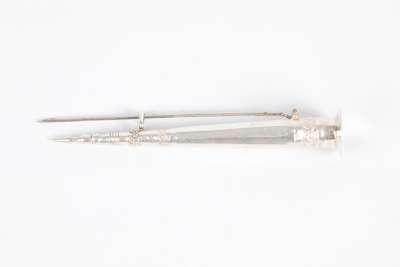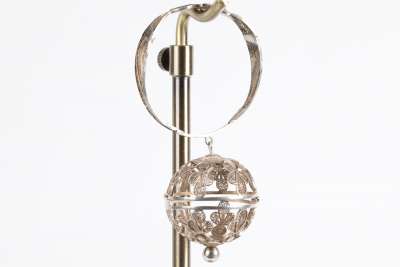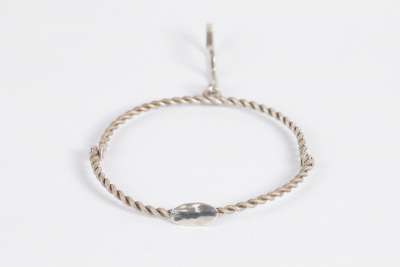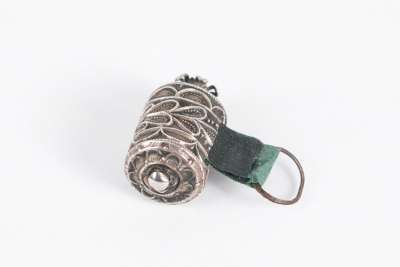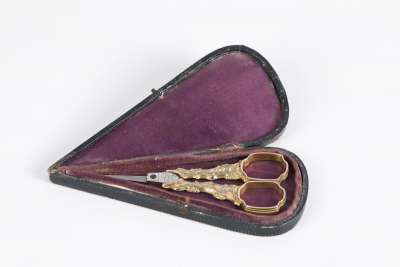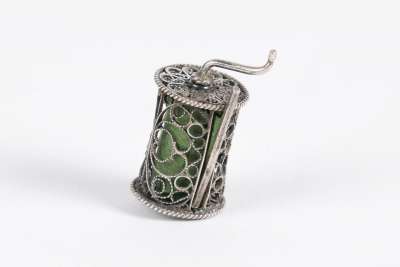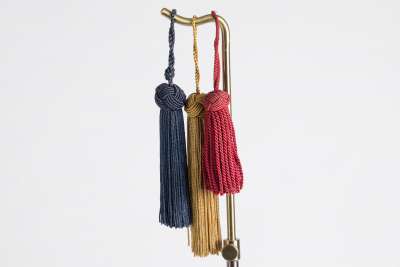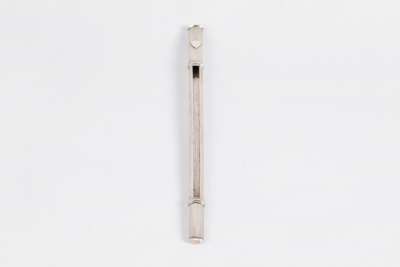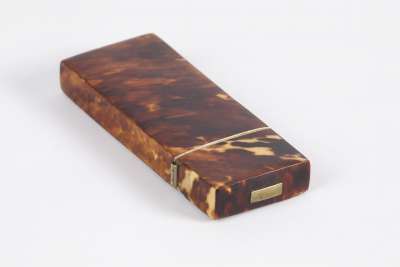This antique pair of stork embroidery scissors is a striking example of 19th-century craftsmanship. Designed in the shape of a stork, these gilded scissors feature intricate detailing that showcases the skill and precision of the maker. Originating from Europe, possibly France, these scissors are a testament to the fine metalwork and design aesthetics of the period. The elegant design, coupled with the functionality of a tool intended for delicate embroidery work, makes these scissors a valuable addition to any collection.
Condition Report
The stork embroidery scissors are in good condition, with wear that is consistent with their age and use. Notably, the tips of the scissors are minutely separated, as visible in the photographs. This minor separation does not affect their ability to cut thread effectively, maintaining their functionality as a practical tool for embroidery. The gilding remains intact, lending a pleasing patina that speaks to the scissors' history and provenance. Overall, the scissors have been well-preserved, showing only the expected signs of wear from their utilitarian use over the years.
Dimensions
Weight: 10gm, Length: 8.5cm, Width: 1cm, Height: 4cm.
Essential Tool for Embroidery
These scissors were originally intended for use in embroidery, a popular pastime and profession during the 19th century. The precise cutting ability of the stork scissors made them an indispensable tool for embroiderers, who required sharp and reliable instruments to cut thread cleanly and without fraying. Their small size and pointed tips allowed for intricate work, making them suitable for delicate fabrics and detailed patterns. Owning such a tool would have been essential for anyone engaged in the art of embroidery, whether as a hobby or vocation.
Charming Representation of 19th-Century Design
The design of these scissors is a fine example of 19th-century stylisation in utilitarian objects. The stork motif, which was popular in this era, reflects a fascination with nature and an appreciation for artistry in everyday items. The gilding adds an element of luxury and sophistication, highlighting the period's inclination towards ornate and decorative embellishments. This style was often seen in personal and household items, where functionality was paired with artistic expression, creating objects that were both useful and beautiful.
Made with Precision and Care
The creation of these scissors involved skilled metalworking and gilding techniques. The process would have required precision to form the intricate stork shape, ensuring that the scissors not only looked appealing but also functioned effectively. Gilding the metal added a layer of complexity, as it required careful application to achieve a uniform and lasting finish. These techniques highlight the craftsmanship of the period, where artisans combined expertise with creativity to produce objects that stood the test of time both in form and function.
Attributed to a Skilled Artisan
While the specific maker of these stork embroidery scissors is unknown, they likely hail from a skilled European artisan's workshop, possibly in France or Germany. During the 19th century, these regions were renowned for their metalwork and craftsmanship. Artisans often took pride in creating objects that were both functional and decorative, a tradition evident in the intricate design and enduring quality of these scissors. Such items were often made in small batches, making each pair unique and a testament to the artisan's skill and attention to detail.
Collected by Enthusiasts of Functional Art
Collectors of antique sewing tools and those interested in 19th-century decorative arts are particularly drawn to pieces like these scissors. The combination of utility and artistry makes them appealing not only as historical artefacts but also as objects of beauty. Their unique design and the skilled craftsmanship they represent are key attractions for collectors. Furthermore, the stork motif is a beloved design, adding an element of charm and character that enhances their appeal as collectible items. As part of a collection, these scissors offer insight into the history of sewing tools and their evolution over time.
